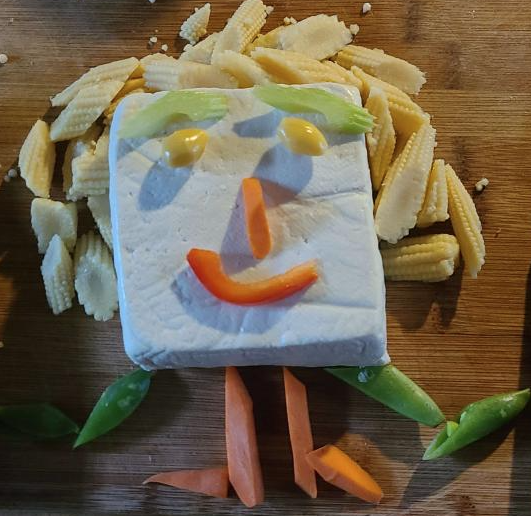Mushrooms, carrots, green pepper, cauliflower, courgette, potato (mmm double carbs), a few chickpeas thrown in as I had some in the fridge (not usually in goulash but it worked). Served with brown rice and a big dollop of Greek style oat yoghurt. Exactly what I needed now that autumn is here


As a Hungarian:
Goulash is a soup, if it’s a stew, it’s called pörkölt, and it’s usually served with potatoes instead of rice, and tejföl instead of yoghurt.
I do want to try your recipe though, especially the oat yoghurt feels like it would put a Mediterranean twist on it with the chickpeas.
It’s weird, in my country everyone calls a stew-like dish “goulash” (which I’m aware is wrong) but the OPs one would probably not be called that lol.
Wanna hear a real goulash crime? 1lb ground beef, 1 can cream of mushroom soup, 1 can of tomato soup, salt and pepper served over macaroni noodles. That’s what I knew as goulash growing up thanks to my Midwestern-ass family
Goulash in my family was ground beef with diced carrots, onion, and celery. A can of diced tomatoes. Healthy amount of garlic. Over elbow macaroni.
This definitely was not real goulash. But that’s what it was called when it was put out in front of me.
I see we’re getting deeper and deeper. What you (USians?) write about would count as “goulash with pasta” for me because pasta is not a default goulash ingredient in my central european part of the world. But if you throw groats there or diced potato as carbs then it doesn’t need the “with X” qualifier… Apparently the farther away from Hungary we are the more wrong goulash becomes haha
Well it’s really hard to get fresh groat in my part of the country. You can get it canned but it doesn’t even taste like groat anymore. You just have to make do with what’s available.
Ah thank you for this and apologies - I was a bit suspicious about how ‘Hungarian’ the recipe truly was but that’s what it was called in the cookbook! I’d love to try some authentic recipes so if you have any that you’d like to share that would be amazing
So I stole this from a popular Hungarian recipe website:
Ingredients: 2 tbsp lard from a mangalica or goose 2 big brown onions 2 cloves of garlic 2 medium sized paprikas 2 medium size pieces of stalk celery 2 medium sized pieces of tomato 1.5 kg beef shank 3 teaspoons or more of paprika powder 2 pcs of bay leaf 2 teaspoon ground cumin 1 medium piece of celery root 2 pieces of parsnip 6 medium pieces of carrots 4 medium pieces of potatoes 1 bouquet of parsley 7 dkg flour 1 egg 4 litres of water salt and pepper to taste
I’ve translated this myself since automatic translation from complicated (and a bit accented) Hungarian is awful. When the recipe refers to parsley, it uses the roots cut into cubes earlier on then the greens for seasoning at the end. Some people like to add tejföl to taste, it is usually served without any in and people add it at the table and stir it in if they like it.
Have fun!
Edit: BTW the word goulash comes from the Hungarian gulyás, where gulya means a herd of cattle, gulyás is the herdsman. Gulyás or gulyásleves can thus be translated as “herdsman’s soup”.